Last updated: February 2nd, 2023
Short on time? Our pick for the best tent waterproofing spray is Kiwi Camp Dry Water Repellent or the Nikwax Solarproof spray (for higher-end gear).
The best tent waterproofing sprays to help you stay dry on your next outdoor adventure, plus how to use them.
Even the best tents get worn out and need a little TLC from time to time.
When I was younger, the drip-drip on my forehead after a nighttime rainstorm was the world’s way of saying, “It’s time to re-waterproof your tent.”
I’m a seasoned camper now and I prefer to stay ahead of the rain.
Gear junkies know that tent spray is a great way to improve your tent’s performance in the rain and extend its life overall.
It’s so easy to re-waterproof your tent fly that I do it at least twice a year. That being said, I’ve learned important tips and tricks for getting the most out of my waterproofing spray.
In this article, we’ll look at different waterproof tent sprays and waterproofing methods so you can choose the right one for your outdoor gear and feel prepared for your next camping trip.
Read on for everything you need to know to waterproof your tent with tent waterproofing spray!
Note: this post contains affiliate links, which help run this site at no extra cost to you so I can keep providing free travel advice and tips.
#1 Kiwi Camp Dry Heavy-Duty Water Repellent

Best used for: Tents, tarps, boots, hunting apparel, outdoor gear, leather, boat covers, and patio furniture
Volume: 10.5 oz
Features: Treats a lot of surfaces, covers a large area in one can, can be double-coated, and can be used as a canvas tent waterproofing spray
Kiwi Camp Dry Heavy-Duty Water Repellent is a classic for a reason. It’s simple, affordable, and gets the job done.
This tent water-repellent spray is one of the more durable and high-performance water proof tent sprays on this list. Water rolls right off treated products and its waterproofing lasts for a while.
The Kiwi camp spray also covers a large area. One bottle will provide a waterproof barrier for at least one large tent.
Unfortunately, it does take a long time to dry. Plan accordingly because the Kiwi Camp Dry spray needs 24-48 hours to dry before packing it away.
As far as silicone sprays go, it smells bad during application but it won’t damage the breathability of your tent fabric.
PROS
- Versatile–works on tent fabric and more
- High-performance silicone waterproofing
- Covers a large area with one can
CONS
- Takes a long time to dry
- May stain some fabrics
#2 Nikwax Tent and Gear Solarproof Waterproofing Spray
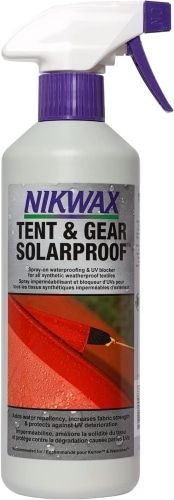
Best used for: Tents, flies, backpacks, awnings, boat covers, umbrellas, patio furniture, and panniers
Volume: 17 oz
Features: UV-resistant properties, biodegradable, and contains no fluorocarbons or VOCs
Nikwax Tent and Gear Solarproof Waterproofing Spray is one of the most popular choices among serious backpackers and outdoor enthusiasts.
While it might seem counterintuitive, the sun can be just as bad for tent fabrics as excessive water.
UV light breaks down the waterproof coating on tent fabrics and degrades their overall strength.
To combat this, Nikwax uses UV-resistant additives in its waterproof spray to ensure your shelter is protected from all the elements.
Nikwax Tent Gear solarproof and waterproof spray is also biodegradable–it’s one less thing that might leave microplastics in the ecosystem where you’re camping.
Plus, using a mechanical spray bottle instead of an aerosol spray can with cut out the CFS.
And while other waterproofing sprays are full of hazardous fluorocarbons (PFCs), Nikwax waterproofing spray offers peace of mind by excluding PFCs.
Many campers swear by Nikwax (myself included for my nicer gear), even using it as extra protection on new tents or camping gear.
PROS
- No CFCs and biodegradable
- Contains UV-blocking additives
- Gentle water-based formula
CONS
- Manual spray bottles are harder to use
- One bottle only covers about one medium-sized tent
#3 Atsko Silicone Water-Guard

Best used for: Tents, outerwear, shoes, sleeping bags, umbrellas, patio furniture, and suede
Volume: 10.5 oz
Features: Dries clear, minimal smell, and multi-use
The Atsko Silicone Water Guard is one of the best tent waterproofing sprays for anyone on a budget or who needs to cover a variety of materials.
One especially good feature of this silicone waterproofer for tents is that it’s breathable. Breathability helps reduce condensation build-up by allowing airflow.
Unlike the Kiwi Camp Dry Heavy-Duty Repellent Spray, this waterproofing spray isn’t as strong smelling and goes on clear. This makes it a good choice for delicate items like clothing.
Just keep in mind that the Atsko Silicone Water Guard needs 72 hours to cure. In other words, it won’t do much good to spray your tent down a few hours before a storm.
The Atsko Silicone Water Guard is more expensive than your typical aerosol spray, but it covers a large surface area.
PROS
- Treats many different fabrics, including leather and suede
- Dries clear
- Minimal smell
CONS
- Long drying time
- More expensive than Scotchgard or Kiwi waterproofing spray
#4 Scotchgard Heavy-Duty Water Shield

Best used for: Standard tents, canvas tents, rain gear, umbrellas, outdoor furniture, camping gear, backpacks, luggage, canvas tarps, and boat covers
Volume: 10.5 oz
Features: Useable on many fabrics and lasts up to a season
First introduced in the 1950s, Scotchgard is a classic, go-to waterproof sealant for tents. It’s the industry standard for affordable tent waterproofing.
While the formula has changed slightly, it still comes in the same easy-to-use can and provides reliable waterproofing for tents.
Scotchgard tent spray is safe to use on polyester, polypropylene, cotton, and nylon fabric.
A single can covers a large surface area, but if you run out midway, it’s widely available and easy to find at hardware and craft stores.
PROS
- Very affordable
- Widely available
- Compatible with a variety of fabrics
CONS
- May stain some fabrics–do a patch test beforehand
- Works best on uncoated surfaces
#5 Gear Aid Seam Grip TF Tent Fabric Sealer

Best used for: Seam sealing, nylon tent floors, rainfly, and tarps
Volume: 4 oz
Features: Sponge applicator and flexible sealant
Note: This sealant is only for nylon, so make sure you’re not using it on a polyester tent.
If you have a little extra time on your hands and you want the absolute best waterproofing you can get for a nylon tent, the Gear Aid Seam Grip TP Tent Fabric Sealer has you covered.
Gear Aid Seam Grip is specifically designed to refresh the polyurethane coat on your tent fly or floor that breaks down over time.
This rain guard for tents isn’t a spray at all but comes with a sponge applicator for precision where you need it. This makes it great for touch-ups.
Plus, it dries clear and works perfectly with nylon, so it’s nearly unnoticeable.
The downside is that applying the product over a whole tent takes longer than normal tent waterproofing sprays.
If you have the time and patience though, the Gear Aid Seam Grip is one of the best heavy-duty water-repellent products on the market.
PROS
- Highly effective at restoring a tent’s top coat
- Flexible and nearly undetectable on nylon
- Small enough to pack on your next camping trip for emergency repairs
CONS
- Not made for polyester tents
- Takes longer to apply to the entire tent than spray bottles
#6 Star Brite Waterproofing Spray
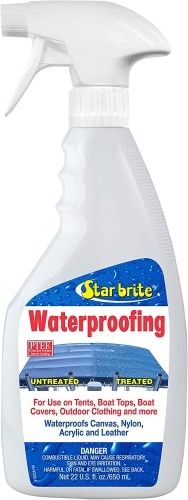
Best used for: Boat covers, car covers, bimini tops, sail covers, tents, jackets, backpacks, boots, awnings, canvas, canopy, sun umbrellas, and patio furniture
Volume: 22 oz
Features: Protects against UV damage and comes in bulk
On the other end of the spectrum from the Gear Aid sealant, Star Brite Waterproofing Spray comes in bulk sizes.
You can waterproof an extra-large tent (or many smaller ones) without running out of product.
Star Brite Waterproofing Spray can be used on a lot of surfaces.
It’s especially prevalent among boaters, where waterproofing is a serious business and UV protection is essential.
This silicone-based spray dries relatively quickly (in six hours) and can be applied to just about any unlaminated fabric.
It doesn’t have a harsh smell or leave a visible residue behind. It also won’t affect the breathability of your tent fabric.
Be aware that this product isn’t recommended for fabrics that are laminated, coated, or backed, so make sure you’re using it on the right kinds of gear.
Overall, Star Brite is the best waterproofing spray if you have an enormous area to cover.
PROS
- Can be purchased in bulk
- Offers UV protection
- Works well on many fabrics
- Breathable
CONS
- Larger sizes don’t come with spray bottles
- Silicone formula is less gentle than water-based
Why Do You Need Waterproofing Spray?
The best waterproofing sprays (also called DWR sprays) protect your tent in multiple ways. Here are a few reasons why I use them.
Sun Damage
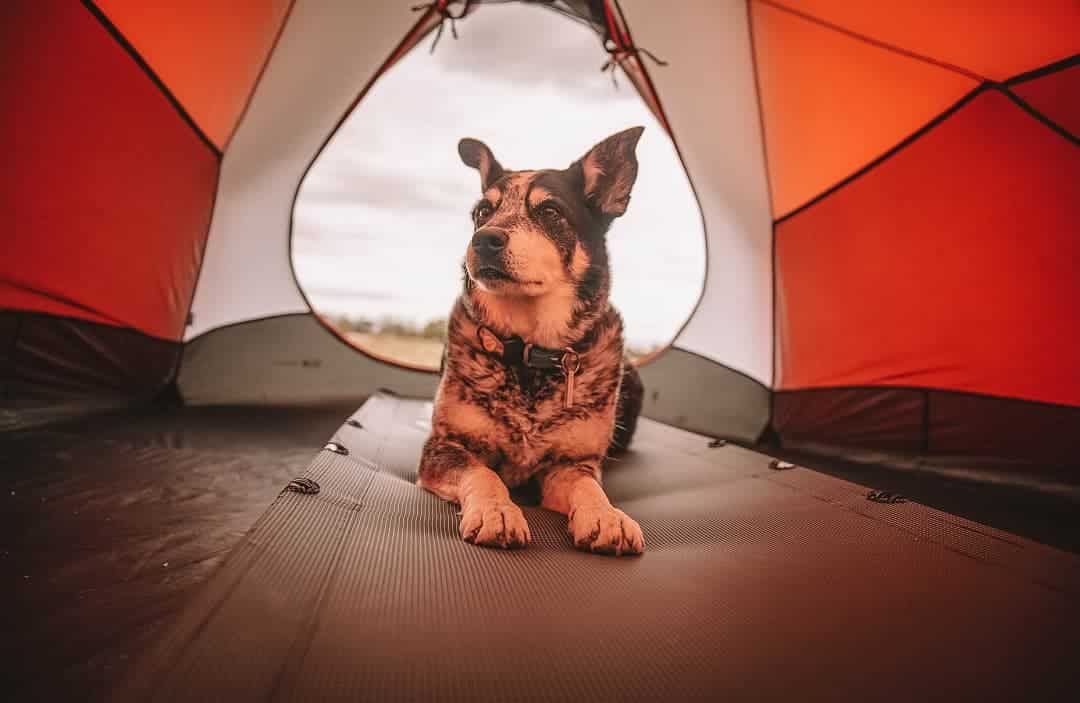
Sunlight degrades tent materials, so we not only need rain protection but UV protection as well.
Using UV-resistant water-repellent spray helps preserve tensile strength and lengthens the lifespan of your tent.
Age & Use
All tents break down with time and normal wear. Refreshing the water resistance is a great way to prolong the life of a tent that’s still structurally sound but becoming porous.
Low-Quality Materials
In some cases, even a new tent isn’t very waterproof.
A waterproof tent product can improve your gear’s performance in wet weather if your rainfly is already leaking or you want to be prepared for a storm.
What to Look for in a Waterproofing Spray
Which Type of Tent Fabric It’s For
Most tents are made with polyester, nylon, or canvas. Check the label on your spray to ensure it’s compatible with your tent material.
Ingredients
A typical waterproofing solution is either silicone or water-based.
Silicone spray for tents is the classic choice and it waterproofs very well, but water-based sprays are gentler and generally compatible with more fabrics.
Environmental Impact
Your waterproofing spray won’t stay on the tent forever. When it washes off, those chemicals enter the water stream.
To minimize your impact (especially if you’re camping in an ecologically delicate or protected area) choose a biodegradable water-based spray.
Also, avoid the toxic chemical preservatives in aerosol bottles by choosing a mechanical bottle.
Smell
Silicone-based sprays, particularly the cheaper ones, have strong odors. Give your tent plenty of time to cure in a well-ventilated area before crawling inside.
How it Dries
Generally, it’s best to use a spray that dries clear and flexible.
As far as drying time, remember to check the label. Some sprays take 24-48 hours to cure before use.
Tips for Using Waterproofing Spray for Tents
Read the directions entirely before starting. Different products work in different ways–some need to be applied to a wet surface, others to a dry surface.
- Wash your tent before applying waterproofing spray. Sealants won’t stick to dirty surfaces.
- Find a clean, dry, well-ventilated outdoor area to work to minimize inhaling fumes.
- After application, allow your tent to dry for the full amount of time. You won’t get the full waterproofing effect if the tent is put away wet.
- Use your waterproof tent spray periodically (more frequently than you’d do a round of seam sealing). It’s quick and easy to apply, but most will wash off after a few camping trips.
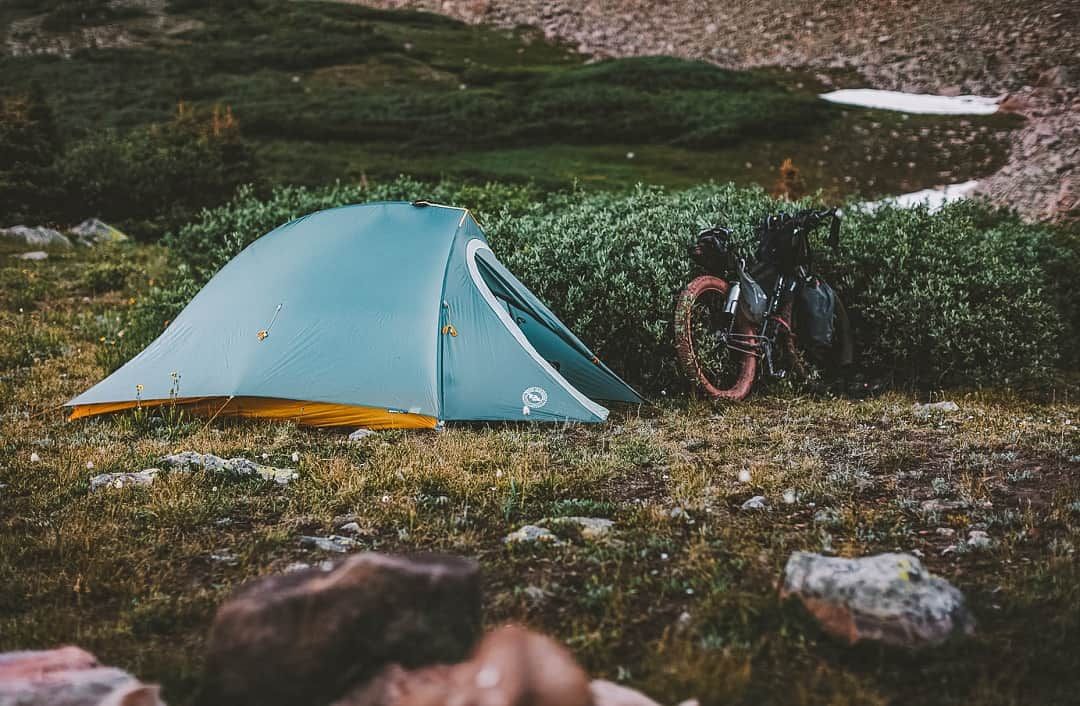
How Do I Waterproof My Tent?
Does waterproof spray work on tents? Yes, but only if used properly, and it doesn’t seal seams.
These products treat the outer coating on the rain fly and bottom of the tent, not the inner seams.
Seams are a natural leak point, so you should check them first. You can check the seams by spraying your tent with water or look for areas that are peeling off.
If your tent requires full re-waterproofing, our step-by-step guide on how to waterproof a tent takes you through the process of seam sealing and waterproofing the inside and outside.
Otherwise, you can watch the video below for an example of how to re-waterproof your tent fly.
How Often Should You Waterproof Your Tent?
When it comes to re-waterproofing a camping tent, seam sealing or touching up the inner coating of the tent walls can be done as often as necessary.
Rain guard for tents wears out quicker, so you can re-apply your spray product as often as you like.
Some people use it before every camping excursion, although it still works well if you apply it less often.
In general, twice a season is a good rule of thumb: once in the spring to prep your outdoor gear and once in the middle of summer.
Looking for tent recommendations? Check out our guides to the best 4-person tents, 6-person tents, 8-person tents, 10-person tents, 12-person tents, 3-room tents, large tents, instant tents, pop-up tents, inflatable tents, tunnel tents, waterproof tents, canvas tents, insulated tents, winter tents, tents with stove jacks, and cabin tents.
What Do You Need to Waterproof Your Tent?
To fully refresh your waterproof tent, you’ll need to know your tent fabric and then purchase the correct seam sealant and waterproofing spray. You should also give yourself a couple of days to let everything cure.
For a simple waterproofing spray for tents, all you need is your spray product, a clean tent, water, a cloth, and a shady spot for drying.
How to Apply Tent Waterproof Spray
- Start with a clean rain fly. Follow the instructions on the bottle to see if it should be wet or dry to start.
- Coat the outside of the fly and floor in a thin, even layer of spray. Let it sit for a few minutes if directed by the packaging.
- Wipe off the excess spray with a cloth and allow it to dry for the full amount of time before exposing it to wet weather.
Watch the video below to learn how to apply an external waterproof coating to your tent.
Frequently Asked Questions About Tent Waterproofing Spray
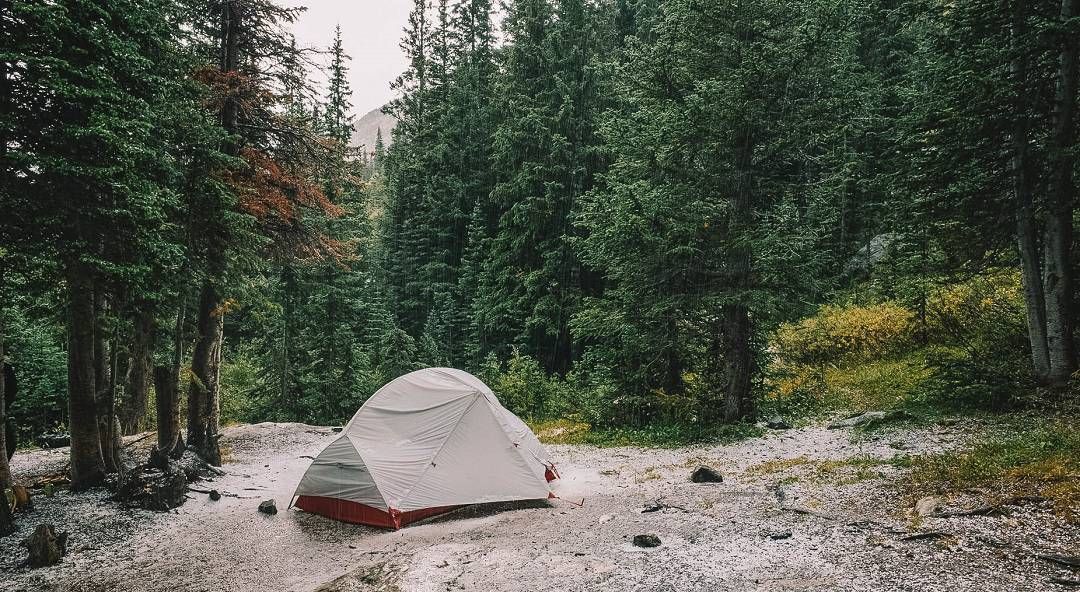
Does Waterproof Tent Spray Work?
Yes–as long as you follow the instructions to prepare your tent, apply the spray, and allow it to cure. If it’s still leaking, you might need to re-waterproof the seams and
the inside of the tent.
Can You Waterproof a Nylon Tent?
Yes! Nylon tents are easy to waterproof. Silicone-based sprays are usually a good choice for tents made of nylon.
What is the Best Waterproofing Spray for Canvas Tents?
Most tent waterproofing sprays are intended for nylon or polyester tents.
Make sure to use silicone-based sprays for canvas tents to avoid harming the breathability of canvas tent materials.
Read the product label fully because the wrong spray can clog the pores that canvas tents and canvas tarps have.
My favorite canvas tent company, Kodiak Canvas, recommends Kiwi Camp Dry Heavy Duty Water Repellent for their tents.
What is the Best Way to Waterproof a Tent?
Find a dry, shady, clean place outside where you can hang the tent up or lay it flat.
Apply the DWR spray evenly across the entire tent. Be patient and let it dry fully. Some sprays stain, so do spot tests if your tent has light-colored materials.
Do You Need to Waterproof a New Tent?
Theoretically, no, unless your tent doesn’t come pretreated for waterproofness.
That being said, I prefer adding a waterproof and UV protection layer before heading out on a camping trip with a new tent, especially if it’s a cheap tent.
Better safe than sorry. Plus, gear waterproofing isn’t too expensive.
Do Tents Lose Their Waterproofing? How Do I Make the Waterproofing Last Longer?
Yes. Any product with a waterproof coat will eventually wear out with time and use. With cheaper gear, this may happen faster.
Help the waterproofing last longer by keeping your tent clean and treating it with a UV protection spray. When you notice water pooling or leaking, perform a partial or full re-waterproofing.
How Often Do Tents Need Waterproofing?
This is different for every tent and every style of camping! Check out our guide to fully waterproofing your tent for more advice on when to waterproof.
In general, it’s good to add a waterproof coating at the beginning of the camping season and a second layer halfway through.
Of course, you should also update your tent’s waterproofing if it’s leaking.
Can You Waterproof an Old Tent?
Yes. Just make sure to fix any holes and seal the seams well before beginning. You might also want to top up the rain guard more often than a newer tent needs.
Can You Make Homemade Waterproofing Spray For a Tent?
Yes, but it’s not recommended. Homemade waterproofing spray with silicone will wash away faster and won’t be as gentle as designated rain gear spray.
If you want to make your own waterproof tent product, a 1:1 waterproofing solution of silicone and mineral spirits is the most common recipe.
What’s the Difference Between Seam Sealer vs Tent Sealer Spray?
Seam sealant pastes seal seams while sprays waterproof the whole tent and other outdoor gear. Tents lose their external waterproof layer fastest.
Whether your tent was $100 or $900, you’ll have to re-waterproof your tent exterior at some point…unless you want to wake up in wet sleeping bags.
Conclusion – What is the Best Waterproofing Spray for Tents?
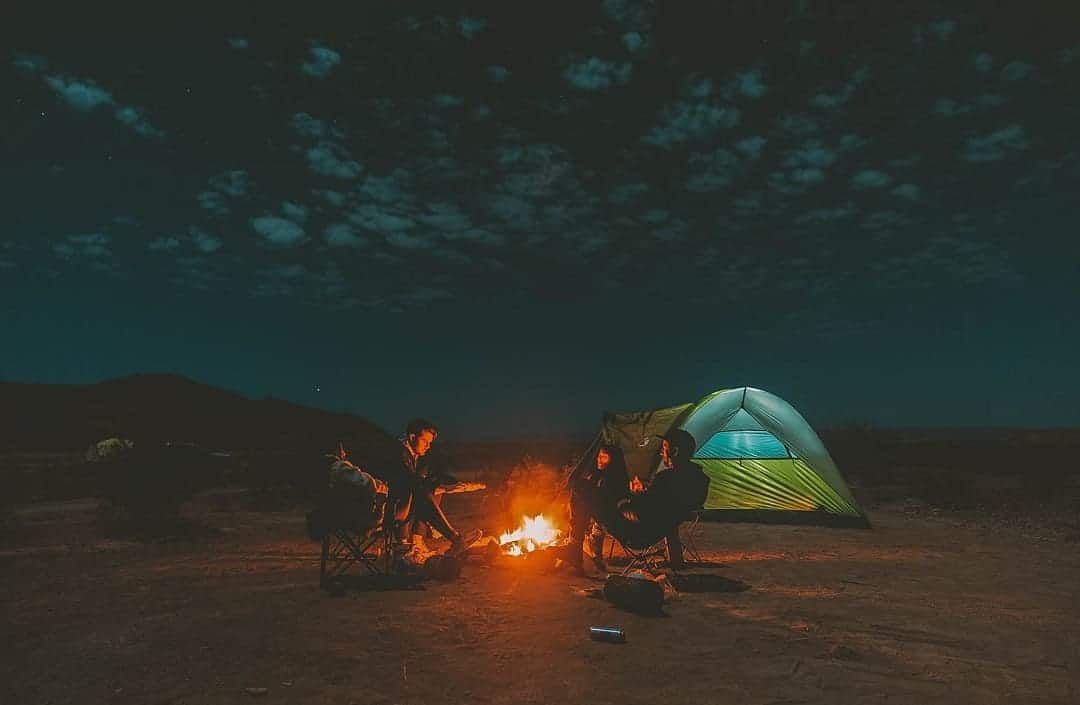
If you’re a casual camper who wants something affordable and easy to use on all of your gear, Kiwi Camp Dry Water Repellent is the best tent waterproofing spray.
Kiwi water repellent spray is cheap, simple, and can be used to waterproof all of your camping gear, including a canvas tent.
However, if you’re looking for something to protect a high-end backpacking tent, go with Nikwax Solarproof spray.
The Nikwax spray will take care of your tent and the environment.
Its UV resistance is good for thin fabrics and, as a biodegradable product, it’s safe for the ecosystem where you’ll be camping.
ABOUT THE AUTHOR

Kristi Allen
Kristi Allen is a freelance journalist and travel writer from the US specializing in all things outdoors. She grew up hiking and backcountry skiing in the North East and has driven 15,000 miles across the US and Canada in an ongoing quest to visit every national park. Kristi covered politics before moving abroad and lived in Peru, Italy, and China. She is currently exploring the US by van with plans to return to Asia in 2021.
Looking for more recommendations on the best outdoor gear? Check out these articles below!
Best Waterproof Walking Shoes for Women
Best Screen Houses for Camping
Best Reclining Camping Chairs with a Footrest
Best Heavy-Duty Camping Chairs
Pin this image for future reference


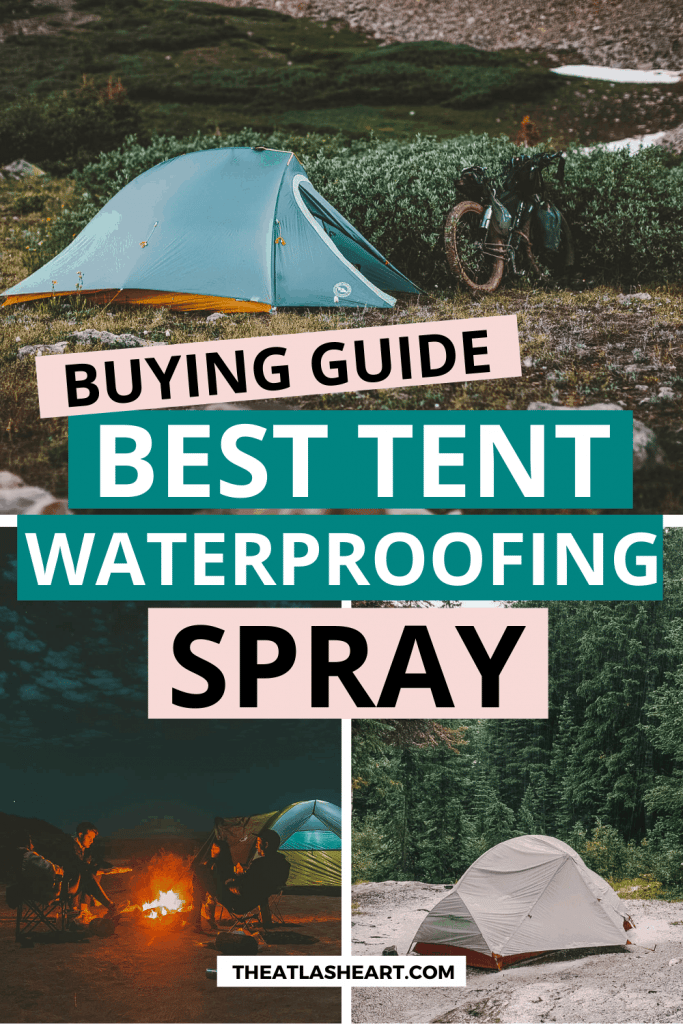
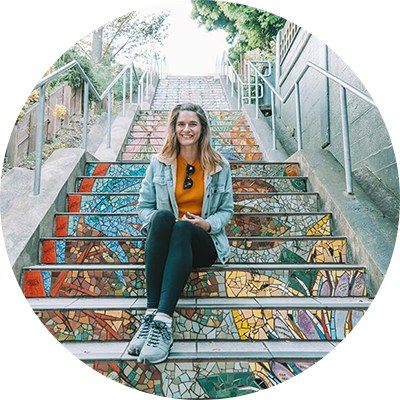

I have an Ozark (WalMart) pop up. The canopy is noted as 100% Polyester. See link below. I can’t see if it’s a “Laminated” material. I’m leaning towards the Starbrite product. It seems relatively available, appears to provide largest coverage and is the quickest to dry. The warning comment about laminates is of some concern though.
Any comment?
https://www.walmart.com/ip/Ozark-Trail-10×10-Straight-Leg-Instant-Canopy-Gazebo-Shelter-100-sq-ft-Coverage/34528397
Hi, I have some footwear proofer (for leather, suede & fabric). Will this also work on my tent?
Hi Duncan,
It depends on what brand of proofer you have. Kiwi Camp Dry, for example, works on a range of materials, from leather shoes to tents and tarps. Check whether the packaging lists all of the materials it works on, and whether it specifies the kind of fabric (synthetic or natural). If it mentions nylon, then it should work on a nylon tent as well. Also, you can check out our article on how to waterproof a tent for detailed instructions.